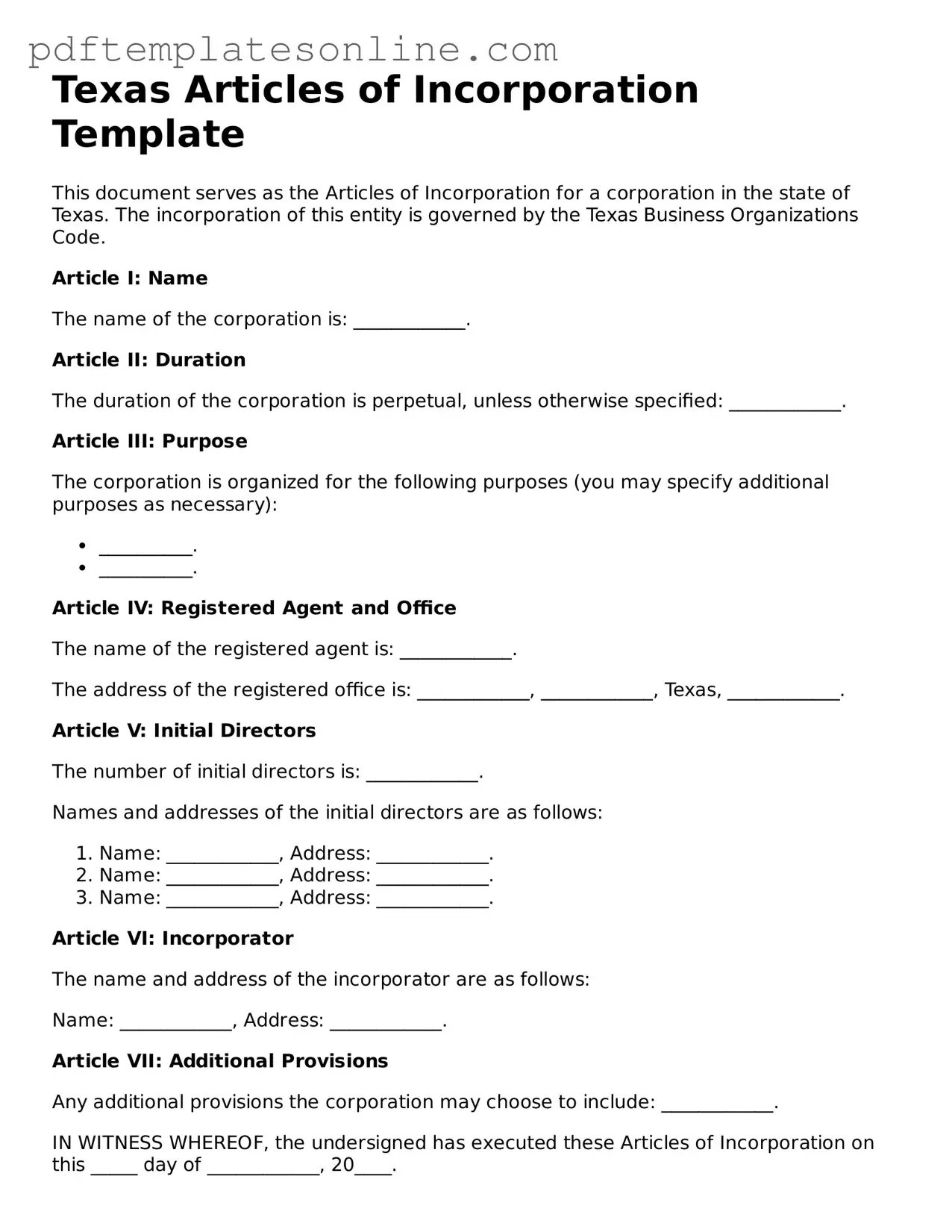Filing the Texas Articles of Incorporation can be a straightforward process, but many individuals make common mistakes that can lead to delays or complications. One frequent error is not providing a clear and specific name for the corporation. The name must be distinguishable from other registered entities in Texas. If the name is too similar to an existing business, the application may be rejected.
Another mistake involves failing to include the correct purpose of the corporation. The purpose statement should be concise yet descriptive enough to inform the state and the public about the business activities. Vague or overly broad statements can lead to confusion and potential legal issues down the line.
Many applicants overlook the importance of appointing a registered agent. This person or business must have a physical address in Texas and be available during business hours. Failing to designate a registered agent can result in the rejection of the application, as well as complications in receiving legal documents.
Inaccurate information about the incorporators is another common issue. The Articles of Incorporation require the names and addresses of the incorporators. If this information is incomplete or incorrect, it can lead to delays in processing. Double-checking these details is crucial to ensure a smooth filing process.
Some individuals mistakenly believe that all signatures are optional. However, the Articles of Incorporation must be signed by the incorporators. Without the required signatures, the application cannot be processed, and the corporation will not be legally recognized.
Finally, many people fail to pay the necessary filing fees. The Texas Secretary of State requires a fee to process the Articles of Incorporation. Not including the correct payment can result in the application being returned or delayed. It’s essential to verify the current fee structure before submitting the form.
